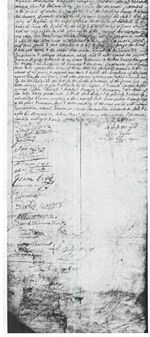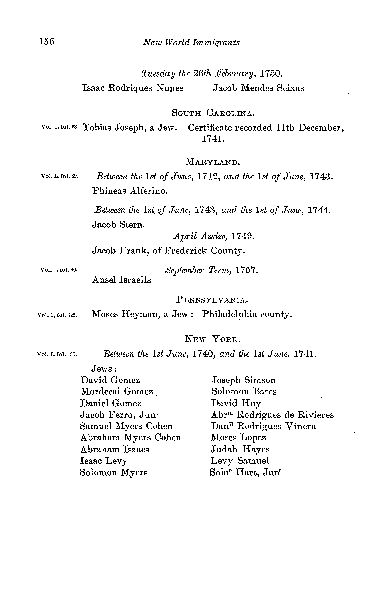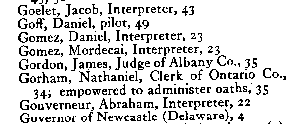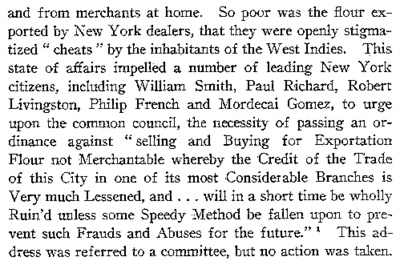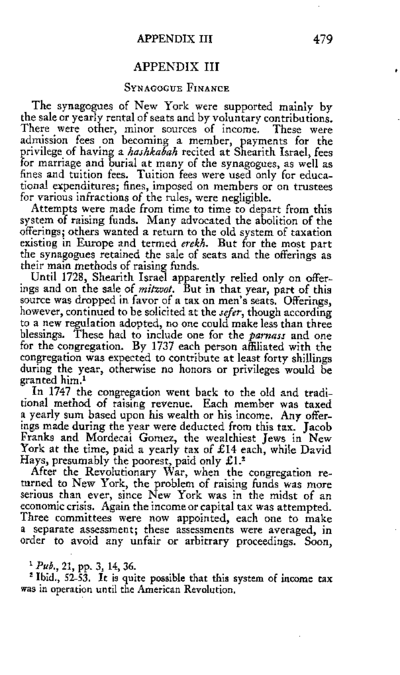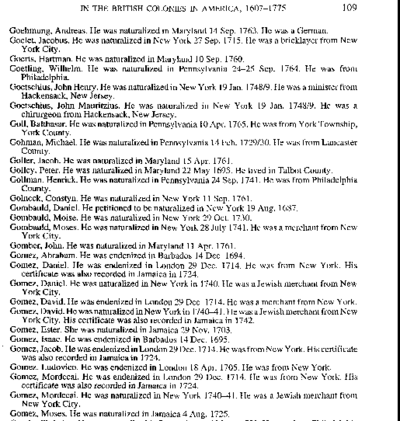Mordecai GomezFrom The Peopling of New York CityMordecai Gomez
Mordecai Gomez must have been a prominent man during the early 1700s because I was able to find considerable information on him. To switch up the order, I began my journey into Gomez’s life at the Municipal Archive, and found a death certificate that recorded the birth of Mordecai Gomez in 1688 on the island of Jamaica, and his death on November 1, 1750 in New York. He was born to Luis Moses Gomez who was a very notable merchant of his time. My research continued back at the genelogy database on the first floor on the New York Public Library. Mordecai Gomez was married to Esther Rachel Campos of Jamaica, and had three children: Moses, Issac and Jacob. Unfortunately in 1736, Esther Gomez passed away at the young age of forty-one. Five year later, Gomez got remarried to Rebecca Haim de Lucena, through whom Gomez had four children: Moses Mordecai, Eve Esther also known as Hester, Rachel and Abraham.[1] The children from the first marriage were protected by the marriage contract dated April 23, 1741. Gomez married off his daughter, Eve Esther to Uriah Hendricks, which united two of the most prominent Jewish families together.
Mordecai Gomez was an active participant of the affairs of the Jewish community as well, and he initiated a petition for the “town’s permission to use two lots of land near the Apple Bush (Beekman’s Swamp) as a site or a new cemetery, since ‘the old one was full’ in August 1723.” As more Jews gained wealth, status and in number, and so they became more involved in the community. In 1728, of the 29 people who contributed to the cemetery and synagogue, 12 were Sephardic, and they gave more money than the remaining individuals. By 1747, tax rolls show that the two members with the largest assessment were Jacob Franks who was an Ashkenazi Jew and Mordecai Gomez who was Sephardic.[6] Mordecai Gomez’s political influence was well-known at the time. The colonial Assembly once met in Mordecai’s house in 1746, due to a fear of a smallpox epidemic in the original location. This is a conspicuous indication of the prominent position Gomez held in early New York. This elusive immigrant had left enough clues for anyone to spot him, thus become a prominent man in New York. Below are some of the documents and articles that specify Mordecai Gomez's role in politics and in the community. It also includes a snippet from Horsemanden;s journal which describes him as the interpreter. It also includes the document that talks about Gomez's naturalization through the Act of 1741.
References
|
